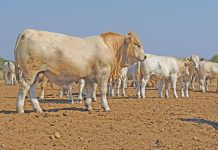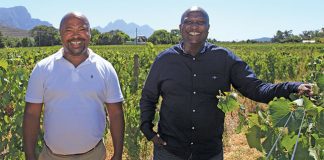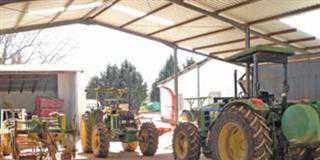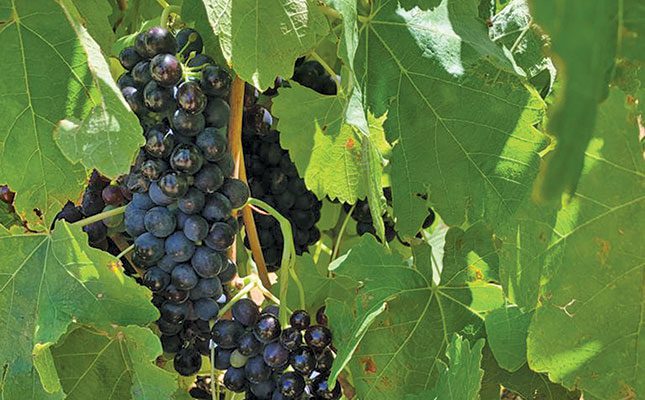
Photo: Supplied
Terracura Wines, in Cape Town’s Northern Suburbs, is buzzing with activity in preparation for the harvest, which is two weeks early.
Chris Groenewald, co-owner and winemaker of Terracura, is juggling this interview while selling wine, putting wax on bottles and directing repairs on the cellar’s cooling system that broke the day before.
READ Farmworker’s son now a premium wine producer
Despite all the chaos, Groenewald remains calm, a characteristic that is of utmost importance if you captain the South African blind-tasting team in the World Blind Tasting Competition, as he did at Château Sainte-Roseline in Provence, France, in 2023, and at Chateauneuf du Pape in the Rhone wine region in 2021.
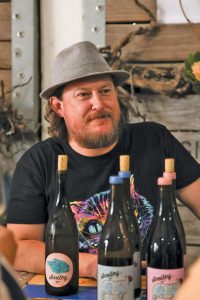
The South African team is selected based on their performance during the South African Blind Wine Tasting Championship, with the winner being appointed as captain. Each team comprises four tasters and a coach.
But what exactly does a blind-tasting competition entail? The objective is to identify the wine you are tasting without seeing the label.
In the World Blind Tasting Competition, teams are given 12 wines and receive points for identifying the grape variety, or varieties if it is a blend, country of origin, appellation, vintage, and producer of each wine.
Groenewald says last year’s competition, in which 33 countries competed, was particularly tough.
The Romanian team, which won, only scored 108 points, which is the lowest score achieved by the winner since the start of the competition in 2013.
The event was also very competitive. Romania beat the Netherlands by only one point. Denmark took third place with 95 points and France was fourth with 90 points.
South Africa came ninth, with only a 20-point difference to Romania.
Practice makes perfect
Groenewald identifies ‘practice’ as the key to becoming a good blind taster: “Your palate is like any other muscle. The more you practise it, the better it gets. Taste as many local and international wines as possible.”
Being part of group who enjoys exercising their palate helps. Groenewald and his friends often have get-togethers, with a few wines hidden in paper bags, to see who can identify the wines correctly.
His wife, Karlien, is also a blind-taster extraordinaire, and was ahead of him during this first round of the South African competition last year.
Beside practice, an aspirational blind taster should read up and research the techniques used and wines made in different regions during different vintages, and also understand the impact that climatic conditions in a specific year will have on wines made in a particular region.
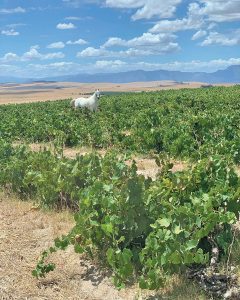
“Read up about a region while you taste its wine, and determine what makes it different from other regions,” he suggests. Tasting wine should also be a passion.
Groenewald comes from a family of chefs as well. He loves cooking, but decided to study human resources after school. The course was not for him, so he quit after two-and-a-half years.
At the time, he started working in tasting rooms, which sparked his interest in wine. His love for people, however, drove him to study a master’s in theology at Stellenbosch University and become a preacher.
As a talented musician, who plays guitar and clarinet, he even had a music ministry for a while.
While studying he continued to work in tasting rooms, and during his final year decided to do a level three Wine and Spirit Education Trust (WSET) course.
His career in the wine industry took off after he finished his theology degree, and was appointed a wine importer at Great Domaines in Johannesburg.
While in this job, he completed a two-year WSET diploma, which is one of the highest qualifications in his field.
Identifying the wine
Groenewald makes tasting notes and then uses a deductive approach to identify wines. First he assesses the “structure of the wine”, which relates to the acidity, alcohol, tannins, sweetness and body of the wine.
“The structure of the wine can indicate whether the wine is from an old or new world, and a hot or cool climate. Wines from warm areas, for instance, tend to have higher alcohol levels and lower acidity. They might also be fuller-bodied, with a longer finish and less minerally,” he explains.
READ Why a Cape winemaker bought a vineyard in Slovenia
As part of the structure, Groenewald also evaluates the colour of the wine. This can give an indication of the variety, style and age of the wine.
Red varieties, such as Cabernet Sauvignon, for instance, have a deep-red colour, while Malbec or Shiraz commonly have a deep-purple hue.
Pinot Noir, on the other hand, usually has a pale complexion. White varieties, such as Sauvignon Blanc might have a pale-yellow colour with a green hue, while a Chenin Blanc might be more yellow.
The colour may give an indication of the time spent on skins to extract colour.
White wines left on the skin have a more orange colour, while the colour intensity of reds increases the longer the juice stays on the skins.
On the other hand, black grapes can produce a white wine if separated from the juice quick enough, as happens when Pinot Noir is used to make sparkling wines.
“Pinotage is typically produced in a style using high extraction, resulting in a very intense colour, as is the case with your Beyerskloof and Kanonkop Pinotage.
“However, it can also be made using less extraction, resulting in a much lighter colour intensity,” Groenewald says.
The colour may also give an indication of oxidation and ageing, with white wines usually becoming darker with time, and red wines becoming lighter.
Groenewald considers the aroma and flavour profile of the wine last.
“The flavour profile gives you some indications to help identify a wine, but flavours change over time and the profile of some wines are very similar at different ages.
“Old Cabernet Franc and Shiraz, for instance, have a very similar taste profile.”
If you are thinking of pursuing a career in blind tasting, think again.
“Blind tasting requires a lot of skill and is fun to do, but you will not be able to make a living from it in South Africa,” he says.
“Even in Europe, blind tasting should be combined with other ways to make a living. Good wine-tasting skills are also an essential tool for every winemaker.”
Email Chris Groenawald at [email protected].






